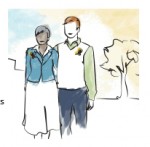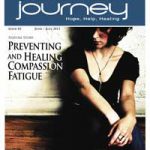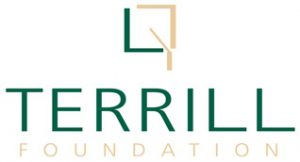Blogs
Download your copy here!
USBIA collaborates with other national brain injury organizations to form One Voice Coalition
USIBA participated in One Voice Coalition, a collaboration with other national brain injury organizations to develop a federal position paper describing the unmet needs of people with brain injury. Download the report here.

Save the Date
Facebook Ask the Expert Event: Suicide Prevention
Join suicide prevention experts!
Monday, September 10, 2012
12:00-2:00 pm EDT
Join the Live Chat: https://www.facebook.com/VetoViolence?ref=hl#!/events/278619925576273/
Suicide is a serious public health problem that can have lasting harmful effects on individuals, families, and communities. Suicide is the 10th leading cause of death in the United States, accounting for nearly 37,000 deaths each year. Apart from deaths, there are an estimated 465,000 visits to emergency departments each year for self-harm injuries. In 2008, the most recent year of available data, more than 1 million people reported making a suicide attempt.
On World Suicide Prevention Day, CDC’s VetoViolence Facebook page will be hosting an Ask the Expert focused on suicide prevention!
From CDC:
- Deb Stone, ScD, who has more than 10 years of experience in suicide prevention; and
- Natalie Wilkins, PhD, whose areas of expertise include evidence-based decision making, evaluation, and suicide prevention.
From the Substance Abuse and Mental Health Services Administration (SAMHSA):
- James Wright, MS, LCPC, who is a Public Health Advisor in the Suicide Prevention Branch, Center for Mental Health Services; and
- Jennifer Cappella, MPA, who is a Public Health Advisor in the Suicide Prevention Branch, Garrett Lee Smith State and Tribal and Campus Suicide Prevention Grant Programs.
We look forward to you joining us on Monday!
Learn More
- Suicide Prevention
- Substance Abuse and Mental Health Services Administration (SAMSHA)
- National Suicide Prevention Lifeline 1-800-273-TALK (8255)
Stay Connected
- Like VetoViolence on Facebook
- Ask the Expert: Suicide Prevention
- Follow CDC’s National Injury Center on Twitter: @CDCInjury
June edition of Brain Injury Journey Magazine electronic version available for free
 Brain Injury Journey Magazine – Help, Hope, Healing is a first rate magazine for the Brain Injury community at large. We are pleased to offer the second issue for free by click here!
Brain Injury Journey Magazine – Help, Hope, Healing is a first rate magazine for the Brain Injury community at large. We are pleased to offer the second issue for free by click here!
For additional information about the magazine and to sign up to receive future editions, visit: www.lapublishing.com/brain-injury-journey-magazine
Please be sure to share this magazine with friends and colleagues!
Larry Boswell sat slumped in a wheelchair. His sweatpants were soiled, his T-shirt soaked in saliva. Flies buzzed around his head
He was able to walk when he arrived at Illinois’ Cobden Rehabilitation and Nursing Center in 2008, government records show, something he can’t manage now. Speech therapy for the 57- year-old ended shortly after he was admitted, according to a lawyer trying to persuade Medicaid to transfer him.
While much of what Boswell says is incomprehensible, he managed a clear “no” when asked if he wanted to stay where he was. Cobden officials didn’t respond to telephone calls.
Boswell is one of nearly 244,000 brain-injured people consigned to nursing homes, according to data compiled by Bloomberg from U.S. Medicare and Medicaid statistics. He’s also on the front line in a national battle to get people like him out of facilities that aren’t equipped to care for them.
“People used to be put away in state hospitals and state developmental centers,” said Steven Schwartz, a lawyer who filed a class-action lawsuit to force Massachusetts to provide alternatives to nursing homes for the brain-injured, and won a settlement that’s still being implemented. “Now people with brain injuries are warehoused and put away in nursing homes.”
Over 4 million brain-injured Americans — including victims of car accidents, assaults, strokes and falls — suffer from long-term disabilities that require specialized therapies. They are sometimes neglected in institutions designed for geriatric care, not for the treatment they need. In some cases, they’re in facilities with low scores from a U.S. agency that grades nursing homes on quality, cleanliness and other measures.
Click here to continue reading this on the Blomberg web site
BENEFITS OF STATE MEMBERSHIP
State Members of USBIA are united in a common mission to engage the community in preventing brain injury and improving lives. By joining USBIA, your organization is automatically connected to a network of other state organizations that share similar goals and are dedicated to affecting positive change through education, collaboration, advocacy, and outreach.
State Membership in USBIA provides your organization with a range of practical, hands-on tools and resources to help you effectively manage the day-to-day operations of a successful brain injury organization fulfilling the needs of those in the brain injury community in your state.
We encourage the leadership of state organizations to review the many benefits of USBIA that are listed below. When you are ready to join the Alliance, email info@USBIA.org, or simply call us at (720) 651-3368.
- PEER-TO-PEER COMMUNICATION
- TECHNICAL ASSISTANCE
- CONTINUING EDUCATION
- A UNIFIED VOICE FOR PUBLIC POLICY & ADVOCACY
- RESOURCE GENERATION
- NETWORKING
- BRAIN INJURY AWARENESS MONTH MATERIALS
Through the USBIA membership network, the executive staff of state organizations establish direct connections to their counterparts in other states. Through peer-to-peer dialogue, state leaders and staff can develop and share strategies to meet the needs of people living with a brain injury, their caregivers, and community service providers where they live. Moreover, networking with other leaders is tremendously beneficial in identifying potential opportunities and meeting the day-to-day challenges of running a successful brain injury-focused organization.
USBIA provides technical assistance in all areas of running a brain injury nonprofit such as:
- Strategic Planning
- Working in the Justice System
- Fundraising
- Special Events
- Board Development
- HR
- Working with Your State Agency
- Program Development
- Public Policy
- Internal Policy Development
- Diversity, Equity, and Inclusion Policies and Strategies
USBIA regularly conducts webinars on a range of practical topics including fundraising, public policy, living with brain injury, community organization, and many others. All of USBIA’s continuing education efforts are archived on the USBIA website and are designed to help member states and organizations deliver effective services to their constituents.
Additionally, USBIA holds informal round table discussions on a variety of topics related to brain injury and nonprofit management that are welcome to all staff, board members, and advocates of member organizations.
Staff, board members and advocate members regularly attend these webinars and roundtables.
Recent topics have included:
- Resilience and Brain Injury presented by Kyla Pearce Senior Director of Programs, LoveYourBrain Foundation, USA
- What NASHIA Can Do for Your State? presented by Rebeccah Wolfkiel, Executive Director, National Association of State Head Injury Administrators (NASHIA)
- Sex and Gender Differences in Brain Injury and Why it Matters. presented by Katherine Price Snedaker, LCSW, CEO and Founder of PINK Concussions
Testimonials:
Bryan Bates BIAAZ Board Chair: In 2021 USBIA brought together resource facilitation staff from across the network to discuss program modification and service delivery adaptions that occurred during the COVID pandemic. It was fascinating to see the ingenuity that exists across the network on behalf of the brain injury community.
Across the country, the Brain Injury Alliance staff showed a true passion to serve and support their clients through unprecedented times.
I can’t thank USBIA enough for being a convener and sharing the big picture look at how true community level care can adapt and morph in real time. From the clinical side, it was impressive to see best practices not only developed, but shared network wide.
David King, CEO Minnesota Brain Injury Alliance: I recently moderated a USBIA roundtable discussion on staff retention. During this challenging time of hiring and retaining employees, it was really great to be engaged in a thought provoking and creative discussion about the many and various ways Brain Injury Alliances were recruiting and retaining quality staff to ensure that the needs of their constituents were being met. I have attended a number of roundtable discussions over the years and always come away with new and exciting ideas for my organization to try.
As a national advocate, USBIA lends its voice to a range of brain injury issues on a federal level to support awareness and increase funding for research and government programs. In addition, USBIA engages and interacts with other non-profits, safety organizations, corporations, and other entities whose activities impact the lives of people who’ve experienced brain injury.
Each year, during Brain Injury Awareness Month, members of the USBIA Board and Directors of member states meet in Washington DC to directly lobby our congressional delegation on a variety of issues impacting the lives of the survivors we serve.
In addition to these activities, USBIA actively collaborates with other national brain injury agencies on issues of public policy. USBIA represents its members on several boards and committees including:
- National TBI Registry Coalition
- CDC TBI Partner Group
- NASEM Action Collaborative on TBI
Funding is a continuous priority for many nonprofits, so USBIA draws on the collective knowledge of its members to share information on financial development strategies ensuring the stability and long-term viability of member states.
One-on-one assistance with resource development is available through the USBIA peer-to-peer support program and Technical Assistance program to assist members in successfully serving individuals in their state.
Your organization will join an established network of like-minded organizations dedicated to serving persons with brain injury and their caregivers. Membership in USBIA provides a direct link to those who share common goals for support, education, and collaboration. In addition, staff members of USBIA member states are entitled to reduced rates at the annual National Association of State Head Injury Administrators’ (NASHIA) State of the State Conference and the International Brain Injury Association’s (IBIA) World Congress.
In partnership with other national brain injury organizations, USBIA participates in the Brain Injury Awareness Day on Capitol Hill designed to increase brain injury awareness among congressional lawmakers and their staff. USBIA also provides member states with a variety of materials including sample press releases, talking points, posters, and graphics to help promote March as Brain Injury Awareness Month on a local level.
For more information contact Gavin Attwood, CEO
GAttwood@USBIA.org or 720-651-3368.
FOR IMMEDIATE RELEASE: September 17, 2012 CONTACT: Gavin Attwood 303.355.9969 gavin@biacolorado.org
Leading brain injury groups join together to create United States Brain Injury Alliance Formation of new national organization signals growing strength for the brain injury awareness movement. North Brunswick, NJ – In an historic step towards enhancing the quality of life for people affected by brain injury, 18 state groups recently announced that they have joined forces to create the United States Brain Injury Alliance (USBIA) – a national organization committed to engaging the community in preventing brain injury and improving lives. According to the Centers for Disease Control and Prevention (CDC), an estimated 1.7 million people sustain a TBI each year, making it a contributing factor to a third (30.5%) of all injury-related deaths in the United States.
The USBIA is a direct outgrowth of the need to have a centralized sharing platform that will provide support to the state affiliates and develop a common public policy agenda.
“The need for such a national effort is demonstrated by 18 states joining as initial USBIA members in eager response to our outreach started only several months ago,” stated Barbara Geiger-Parker, Chair of the USBIA, and President and CEO of the Brain Injury Alliance of New Jersey. “We are building on the work of these state brain injury alliances to strengthen the services for and advocacy with those affected by brain injury.” “States have long needed support and mentoring to become more robust and serve the brain injury survivors in their own states,” said Gavin Attwood, Vice Chair of the USBIA, and Executive Director of the Brain Injury Alliance of Colorado. “This is a gap that USBIA plans to fill.”
The USBIA demonstrates the groups’ collective commitment to working towards a world where all avoidable brain injuries are prevented, all non-preventable brain injuries are minimized, and all individuals who have experienced brain injury can maximize their quality of life.
To see the list of member states and to learn more about the USBIA, visit www.test.usbia.org.
Unintentional injuries and violence are the leading causes of death, hospitalization, and disability for children ages 1-18. These fact sheets provide a state snapshot of data on the injury-related Maternal and Child Health Block Grant National Performance Measures and Health Status Indicators, with a special focus on disparities based on race, gender, and rural/urban residence. The fact sheets are intended to be a helpful and easy-to-use tool for needs assessments, planning, program development, and presentations.
To access a state fact sheet, go to:
http://www.childrenssafetynetwork.org/states and click on a state.
Terrill Foundation launches brain injury scholarship assistance program.
 Scholarships dedicated to students with neurologic injuries and diseases are rare and difficult to find. Since, 2009, the Terrill Foundation has provided qualifying high school seniors throughout the 50 states whose lives have been changed by neurologic disease and brain injury have received assistance to further their educational goals at universities and technical schools.
Scholarships dedicated to students with neurologic injuries and diseases are rare and difficult to find. Since, 2009, the Terrill Foundation has provided qualifying high school seniors throughout the 50 states whose lives have been changed by neurologic disease and brain injury have received assistance to further their educational goals at universities and technical schools.
This year, there are several scholarship funds open to any graduating senior in high school. Scholarships will be awarded annually in May and funds will be given directly to the educational institution before the fall semester. Applications and information are found at: www.terrillfoundation.org.
Pop Warner Announces New National Rule Changes Regarding Practice & Concussion Prevention
 Pop Warner football players won’t be taking quite as many hits from now on.
Pop Warner football players won’t be taking quite as many hits from now on.
The youth organization said it is limiting contact in practice to try and make the game safer for young players starting this year.
It said coaches must limit contact to no more than one-third of their practice time. It is also banning full-speed, head-on blocking or tackling drills in which players line up more than 3 yards apart. The organization says coaches can have full-speed drills where players approach each other at an angle but “not straight ahead into each other.” It also says there should be no head-to-head contact.
Read more: http://sportsillustrated.cnn.com/2012/more/06/12/pop.warner.contact.ap/index.html#ixzz1xhWrg17a